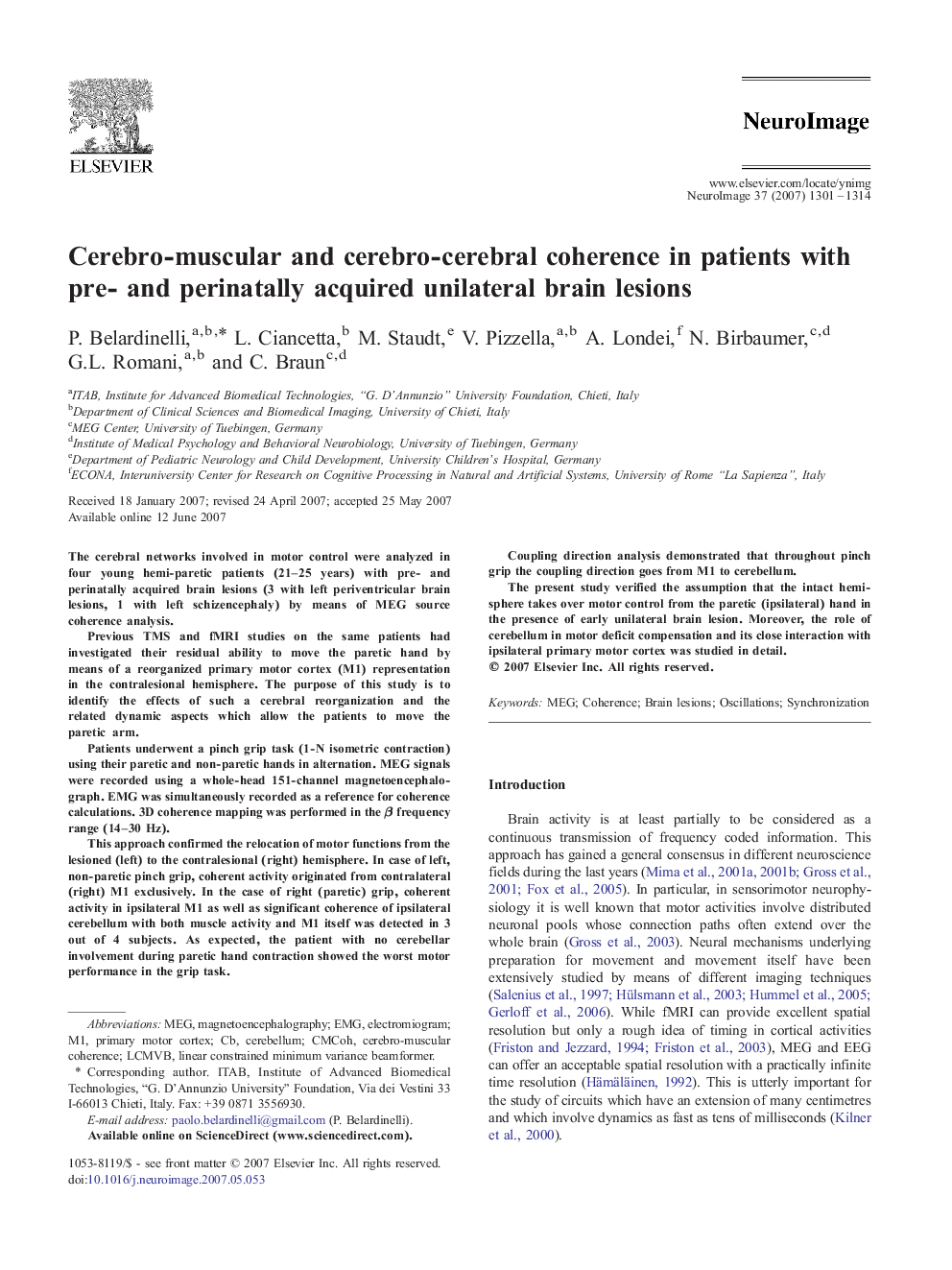| کد مقاله | کد نشریه | سال انتشار | مقاله انگلیسی | نسخه تمام متن |
|---|---|---|---|---|
| 3073500 | 1188839 | 2007 | 14 صفحه PDF | دانلود رایگان |

The cerebral networks involved in motor control were analyzed in four young hemi-paretic patients (21–25 years) with pre- and perinatally acquired brain lesions (3 with left periventricular brain lesions, 1 with left schizencephaly) by means of MEG source coherence analysis.Previous TMS and fMRI studies on the same patients had investigated their residual ability to move the paretic hand by means of a reorganized primary motor cortex (M1) representation in the contralesional hemisphere. The purpose of this study is to identify the effects of such a cerebral reorganization and the related dynamic aspects which allow the patients to move the paretic arm.Patients underwent a pinch grip task (1-N isometric contraction) using their paretic and non-paretic hands in alternation. MEG signals were recorded using a whole-head 151-channel magnetoencephalograph. EMG was simultaneously recorded as a reference for coherence calculations. 3D coherence mapping was performed in the β frequency range (14–30 Hz).This approach confirmed the relocation of motor functions from the lesioned (left) to the contralesional (right) hemisphere. In case of left, non-paretic pinch grip, coherent activity originated from contralateral (right) M1 exclusively. In the case of right (paretic) grip, coherent activity in ipsilateral M1 as well as significant coherence of ipsilateral cerebellum with both muscle activity and M1 itself was detected in 3 out of 4 subjects. As expected, the patient with no cerebellar involvement during paretic hand contraction showed the worst motor performance in the grip task.Coupling direction analysis demonstrated that throughout pinch grip the coupling direction goes from M1 to cerebellum.The present study verified the assumption that the intact hemisphere takes over motor control from the paretic (ipsilateral) hand in the presence of early unilateral brain lesion. Moreover, the role of cerebellum in motor deficit compensation and its close interaction with ipsilateral primary motor cortex was studied in detail.
Journal: NeuroImage - Volume 37, Issue 4, 1 October 2007, Pages 1301–1314